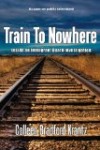Living on the Great Plains, we can tend to think we are removed from the nation’s ongoing debate over illegal immigration. That couldn’t be further from the truth. Just last year, Fremont, a town of some 25,000 in northeastern Nebraska, drew national attention when voters approved a law fining landlords and employers who house or hire illegal immigrants. (The law was suspended a month later pending a challenge to it in federal court.). In May 2008, authorities executed the largest immigration raid in the nation’s history and made 400 arrests at a meatpacking plan in Postville, a town of maybe 2,500 in northeastern Iowa. And less than six years before, northwestern Iowa was where an immigrant smuggling tragedy was discovered.
 On October 16, 2002, an employee of a now-defunct grain elevator in Denison, Iowa, (population 7,500 at the time) was checking the bays on grain hopper rail cars in preparation for loading. In one, he spotted what appeared to be two skulls. They were the first indication that the remains of 11 Central American and Mexican immigrants were in the hopper car, their bodies so badly decomposed they were in states of skeletonization and mummification. The story of what happened to those immigrants and how is the focus of a documentary and a book, Train To Nowhere: Inside an Immigrant Death Investigation.
On October 16, 2002, an employee of a now-defunct grain elevator in Denison, Iowa, (population 7,500 at the time) was checking the bays on grain hopper rail cars in preparation for loading. In one, he spotted what appeared to be two skulls. They were the first indication that the remains of 11 Central American and Mexican immigrants were in the hopper car, their bodies so badly decomposed they were in states of skeletonization and mummification. The story of what happened to those immigrants and how is the focus of a documentary and a book, Train To Nowhere: Inside an Immigrant Death Investigation.
The underlying story is almost as simple as it is sad. The 11 individuals, mostly from Central America, crossed into the United States in the hopes of finding jobs, some assisted by “coyotes” (smugglers). On June 15, 2002, they were among 26 illegal immigrants loaded into the bays of two grain hopper cars in Harlingen, Tex. The opening to the slope-floored bay in which these 11 ended up was locked from the outside. Although 15 immigrants in the other hopper were caught that night during a Border Patrol inspection, officials somehow missed this particular hopper. The train continued north. Trapped inside what one person described as essentially a humidor, the 11 died of dehydration and hyperthermia. The rail car sat in a facility near Oklahoma City for four months before being sent to Denison on October 15. The bodies were identified only through DNA tests.
Colleen Bradford Krantz, who wrote and co-produced the documentary, uses her journalistic background to take readers inside the tragedy. In her capable hands, Train to Nowhere explores not only the how and why of what happened but introduces the reader to some of the people who died and their families, details what must have happened in the rail car, follows the difficulty in the months-long effort to identify the victims, and examines the complexities of illegal immigration. This means the reader encounters and learns from the legal resident older brother of a young Guatemalan who died in the hopper car, a railroad conductor who sold information to one of the coyote networks, and the investigators on the case.
Using material gathered in creating the documentary, Krantz’s book, published by Ice Cube Press in Iowa, adheres to standards she acquired as a reporter for daily newspapers in St. Louis, Milwaukee and Des Moines. Unlike much so-called creative nonfiction today, Krantz is careful in documenting conversations. If she was not present and is relying on someone’s recollection of a conversation, any quotations appear in italics instead of quotation marks. This approach does not detract from the narrative or the flow. If anything, it may subtly enhance the book’s verisimilitude.
In examining the various aspects of this tragedy, Krantz shows both the personal toll and both sides of the immigration debate. Unfortunately, actually preventing or resolving these problems is beyond the scope of this or any book.
[To smugglers, a] person is nothing more than just a piece of meat.
Colleen Bradford Krantz, Train To Nowhere: Inside an Immigrant Death Investigation







